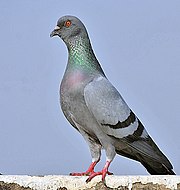Jeff Jarvis, who has (for better or worse) become something of a new media guru stalking the land of the old, caused a bit of a stir in my world when he posted last Saturday on the amazing success of the LA Times news web operation:
David Westphal reports an important and historic crossing of the Rubicon for a major newspaper, recounting a discussion with LA Times editor Russ Stanton at USC: “Stanton said the Times’ Web site revenue now exceeds its editorial payroll costs.”
His response?
So why not go ahead and turn off the presses and the trucks and turn the Times into a pure news enterprise, disaggregated from its production and distribution businesses?
That’s frankly breathtaking in its ignorance of the customers the Times is trying to serve. A million people a day (a million!) still fork over money to buy the print product. Those people are LA Times customers.
There are problems with the print product business model, to be sure. But for a supposedly smart business guru to suggest that a company abandon that many paying customers – as opposed to, say, figuring out how to continue selling them a product they seem to want? In what universe does that make any sense at all?
There are important lessons to learn from the LA Times on line success, but abandoning print is not one of them.


